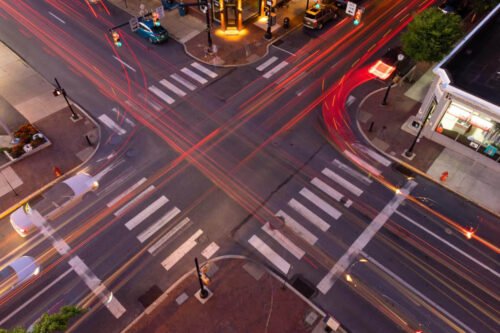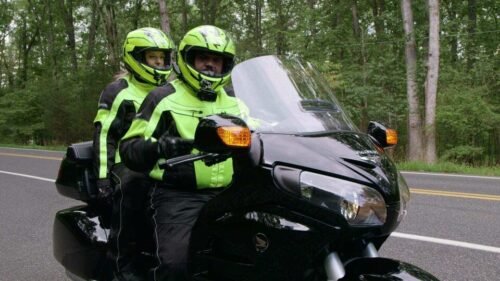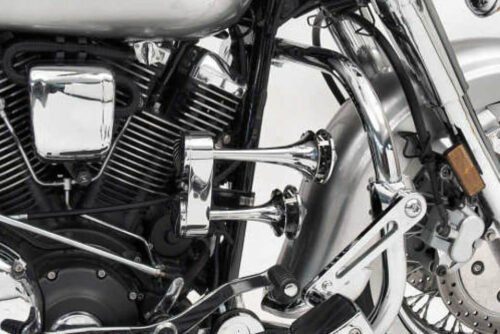E-bikes have transformed into more than just gadgets to help you get around. Now, they're speed demons that can go toe-to-toe with motorbikes. It’s 2025, and these speedy machines have gotten a huge boost from better motors, more powerful batteries, and sleek designs that cut through the air like a knife. Let’s dive into the […]

Top 7 Motorcycle Defensive Riding Tips to Stay Safe on the Road
Riding a motorcycle offers unparalleled freedom, but it also demands heightened awareness and proactive safety measures. Defensive riding isn’t just a skill—it’s a mindset. By anticipating risks and prioritizing safety, you can significantly reduce your chances of accidents. Below, we break down the top 7 motorcycle defensive riding tips, combining expert advice, practical strategies, and the latest insights to keep you safe on the road.
Table of Contents
Top 7 Motorcycle Defensive Riding Tips
1. Assume Everyone Is a “Dumbass” (Including You)
The golden rule of defensive riding: never trust other road users. Drivers might fail to check blind spots, run red lights, or make sudden turns without signaling. Even seasoned riders can make mistakes, so adopt a mindset where you expect the unexpected.
- Anticipate Mistakes: Scan intersections, watch for cars pulling out of driveways, and avoid lingering in drivers’ blind spots. As noted in defensive riding guides, "surprises can force a freeze reaction"—staying alert prevents this.

Scan intersections and watch for cars pulling out of driveways
- Own Your Errors: Regularly assess your riding habits. Are you speeding, tailgating, or neglecting signals? Self-awareness keeps you accountable.
- Practice the “What If?” Game: Mentally rehearse responses to scenarios like a car swerving into your lane or a pedestrian stepping onto the road. This builds split-second decision-making skills.
2. Ride on the Left Side of Your Lane

Ride on the left side of your own lane
Lane positioning is critical for visibility and escape routes. While laws vary, staying to the left (in left-driving countries) offers strategic advantages:
- Improved Visibility: Drivers in oncoming lanes or at intersections can see you better. This reduces the risk of left-turn collisions, a leading cause of motorcycle accidents.
- Escape Route Creation: Positioning yourself slightly left creates space to maneuver right if a car drifts into your lane.
- Avoid Road Hazards: The left side often has fewer oil spills, gravel, or debris compared to the center or right.
Exception: On multi-lane highways, adjust based on traffic flow. For example, move right to avoid merging vehicles.
3. Maximize Visibility at All Times
Motorcycles are smaller and harder to spot than cars. Make yourself unmissable:
- Wear High-Vis Gear: Opt for reflective jackets, helmets, or strips. Bright colors like neon yellow or orange stand out in daylight and low light.

wear high-vis gear to keep visible
- Use Headlights: Even during the day, keep your headlights on. Some riders install auxiliary lights for added visibility.
- Position for Line of Sight: Avoid riding directly behind large vehicles. If a driver can’t see you in their mirror, they won’t know you’re there.
Pro Tip: At night, use your bike’s high beams judiciously and angle them slightly downward to avoid blinding others.
4. Let Angry Drivers Go By

Don't argue with other drivers.
Road rage is a reality, and motorcyclists are especially vulnerable. De-escalate conflicts to stay safe:
- Avoid Eye Contact: Aggressive drivers may interpret this as a challenge. Stay calm and focus on the road.
- Create Space: Slow down or change lanes to let tailgaters pass. A 3–4-second following distance gives you time to react.
- Don’t Engage: Honking or gesturing can escalate tensions. Remember, your goal is to reach your destination safely, not to “win” an argument.
Key Insight: As one safety guide notes, “You can’t control others’ behavior, but you can control your response”.
5. Get Away From Dangerous Situations

Get away from dangerous situations to avoid accidents
When danger arises, act decisively. Common threats include erratic drivers, road debris, or sudden weather changes.
- Escape Routes: Always identify an exit path—e.g., a shoulder, empty lane, or gap in traffic.
- Accelerate or Brake: If a car behind you isn’t stopping, speed up to create space. If an obstacle appears ahead, practice emergency braking: squeeze the front brake progressively while applying light rear brake pressure.
- Swerve Smoothly: For sudden obstacles, push the handlebar in the direction you want to go (counter-steering) and keep your eyes focused on the escape path.
Practice Drill: Set up cones in a parking lot to simulate swerving and braking scenarios. Muscle memory saves lives.
6. Squishables vs. Non-Squishables: Prioritize Risks
This quirky term refers to categorizing hazards:
- Squishables: Pedestrians, cyclists, or animals. Hitting them could cause severe harm to both parties.
- Non-Squishables: Cars, guardrails, or parked vehicles. Collisions here are often fatal for riders.
How to React:
- Avoid Non-Squishables First: Swerve around stationary objects or brake hard. Use techniques like throttle blipping (briefly revving before downshifting) to stabilize the bike during maneuvers.
- Slow for Squishables: Reduce speed near crosswalks or areas with high pedestrian activity.
Case Study: Hitting a pothole (non-squishable) at speed can throw you off balance. Stand on the pegs, shift weight back, and maintain throttle control to glide over it.
7. “Loud Pipes Save Lives”—But Don’t Rely on Them
The debate over loud exhausts rages on. While they may increase auditory awareness, they’re not a substitute for proactive safety:
- Pros: Loud pipes can alert distracted drivers to your presence, especially in blind spots.
- Cons: They often annoy communities and may not be heard by cars with closed windows or loud music.

Use motorcycle horn sparingly
Better Alternatives:
- Use Your Horn Sparingly: A quick beep can warn drivers encroaching on your lane.
- Rev Match: Blip the throttle when filtering through traffic to signal your position.
Expert Verdict: “Visibility and positioning trump noise. Loud pipes are a backup, not a primary strategy”.
Final Thoughts
Defensive riding is about preparation, awareness, and adaptability. By mastering these 7 motorcycle defensive riding tips, you’ll significantly reduce risks. Remember, practice is non-negotiable. Regularly drill emergency stops, swerves, and slow-speed maneuvers to build confidence.
Stay visible, stay calm, and always have an escape plan. As motorcycle safety courses emphasize, “It’s better to arrive late than not at all”.

Motorcycle mechanic, writer. Interested in motorcycle gear for years. Like to stay up to date with the newest products and techniques of the motorcycle.
Many riders who aren't so tall or ladies just starting to ride bikes need to pick out the best Motorcycles for Short Riders and Women. They gotta look for three key things: a seat that's not too high up, a bike that's not too heavy, and something that looks good enough to give them confidence. […]
As we accelerate into 2025, motorbikes are getting a serious tech upgrade. They’re all about safer rides and more fun on the road. Even if you’re a pro or just starting, kitting out your two-wheeler with cool tech stuff is a game-changer. Check out these ten top motorcycle gadgets each motorcyclist will want in 2025. […]
Getting around the city every day can be super annoying. You've got traffic like molasses nowhere to park, fuel prices through the roof, and buses stuffed like sardine cans make heading to the office a real pain. For loads of folks, getting a motorcycle is a pretty slick move—they’re nimble, cost-effective, and perfect for squeezing […]
Rider safety demands motorcycle helmets. Yet, riders still clash over picking full-face vs open-face helmets. Full-face ones take the win for protecting in crashes, but open-face models charm folks who want cool looks better air, and that old-school vibe. This guide dives into the latest research, technological advancements, and real-world insights to help you decide […]
Fodsports FX 60C vs FX30C Pro: What's new techs are the FX 60C bringing to us? Fodsports is a brand worth-mention for helmet communication and video recording. This brand has established itself as a key player with its innovative Bluetooth camera intercom systems. Recently, Fodsports has released a new camera intercom, the FX 60C. How […]

